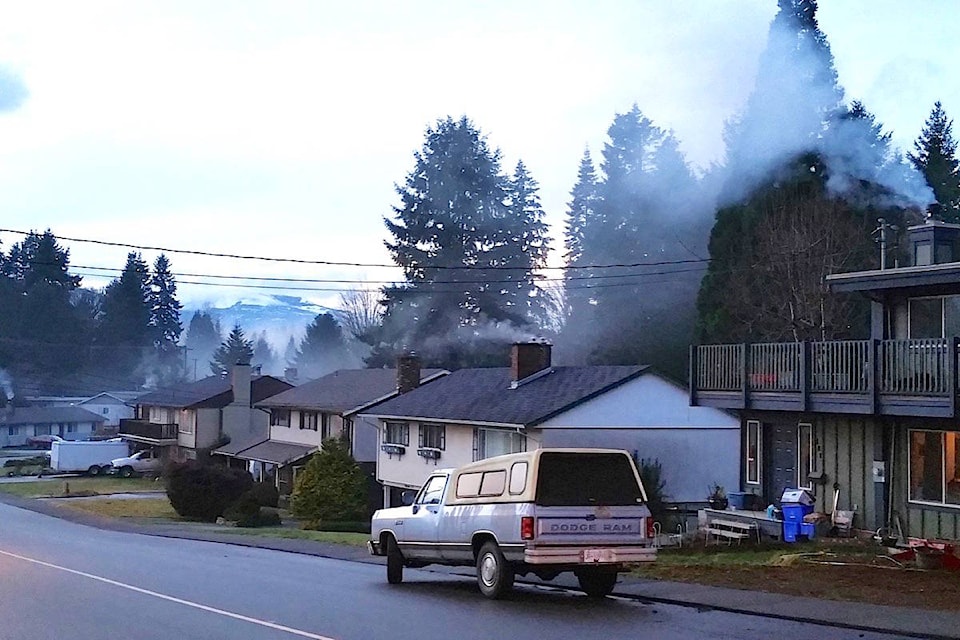The Hearth, Patio and Barbecue Association of Canada is promoting a transition to clean wood heating. In a presentation to Courtenay council Oct. 7, board member Jason VanGarderen said wood heat is affordable, and secure in terms of hydro interruptions.
“Often when we’re considering ways to address air quality, new wood stoves and appliances become a target,” said VanGarderen, general manager of Concorde Distributing Inc. “It’s thought, ‘Let’s ban these appliances and we’ll see immediate improvements.’ We’re suggesting that by banning the new appliances, you probably won’t see much improvement. In the last 20 years, especially in the last five years, the technology in wood stoves has improved drastically.”
“Wood burning is the low-hanging fruit at this point,” Chris Bowen of Pioneer Fireplace said in a separate presentation. “You can see it, smell it, and anything that can be done to clean it up would be helpful to everybody.”
VanGarderen said dry, seasoned wood “makes a world of difference.”
According to Breathe Clean Air Comox Valley, dry wood and new stoves are not a solution to the air quality issue.
“Reducing pollution by a small percentage is not what we need,” group co-ordinator Jennell Ellis said. “We need much more dramatic reduction, and the only way to get that is to move people away from wood heating in populated areas.”
She said studies indicate most people run stoves four to five times above certification levels.
“What a stove is certified for is not how it’s used in the real world,” Ellis said, noting a UK study showed one eco-certified stove equals 18 diesel cars running, in terms of fine particulate matter.
Part of the issue is comparing new and old stoves, but Ellis said when new stoves are compared to diesel cars or other heating sources, “they obviously pollute far more than any other home heating source we could possibly use, exponentially so.
“We have to stop comparing old and new stoves, and start comparing wood stoves to other heating sources. There’s just too much variation…Yes, you could move everybody from old stoves to new stoves, it would get better. But if you moved all those same people from old stoves to other sources of heat, it would get exponentially better. And save a lot more lives.”
Bowen said the cost of wood appliances is much less than other appliances.
“A move to push people away from wood is disproportionately affecting low-income people,” he said. “Also the cost of the fuel itself is less — electricity being the most expensive, wood is the least expensive. Using high-efficiency stoves, you use less wood than a masonry fireplace or an old, inefficient fireplace.”
Bowen and others in the industry would like a seat at the table to discuss air quality solutions, and consider if high-efficiency stoves can play a part in cleaning up the air. He said woodlots are a possible solution. Education, VanGarderen added, will promote proper operation of a wood stove.
At present rates, Bowen said a home can be heated with wood for $750-$1,000 a year.
Ellis, however, said the cost of a gas furnace or heat pump is coming down, and rebates can potentially reach $4,000. She also notes the price of wood has jumped in recent years.
“It was well below $200, and last year wood was selling for $250.”
reporter@comoxvalleyrecord.com
Like us on Facebook and follow us on Twitter
